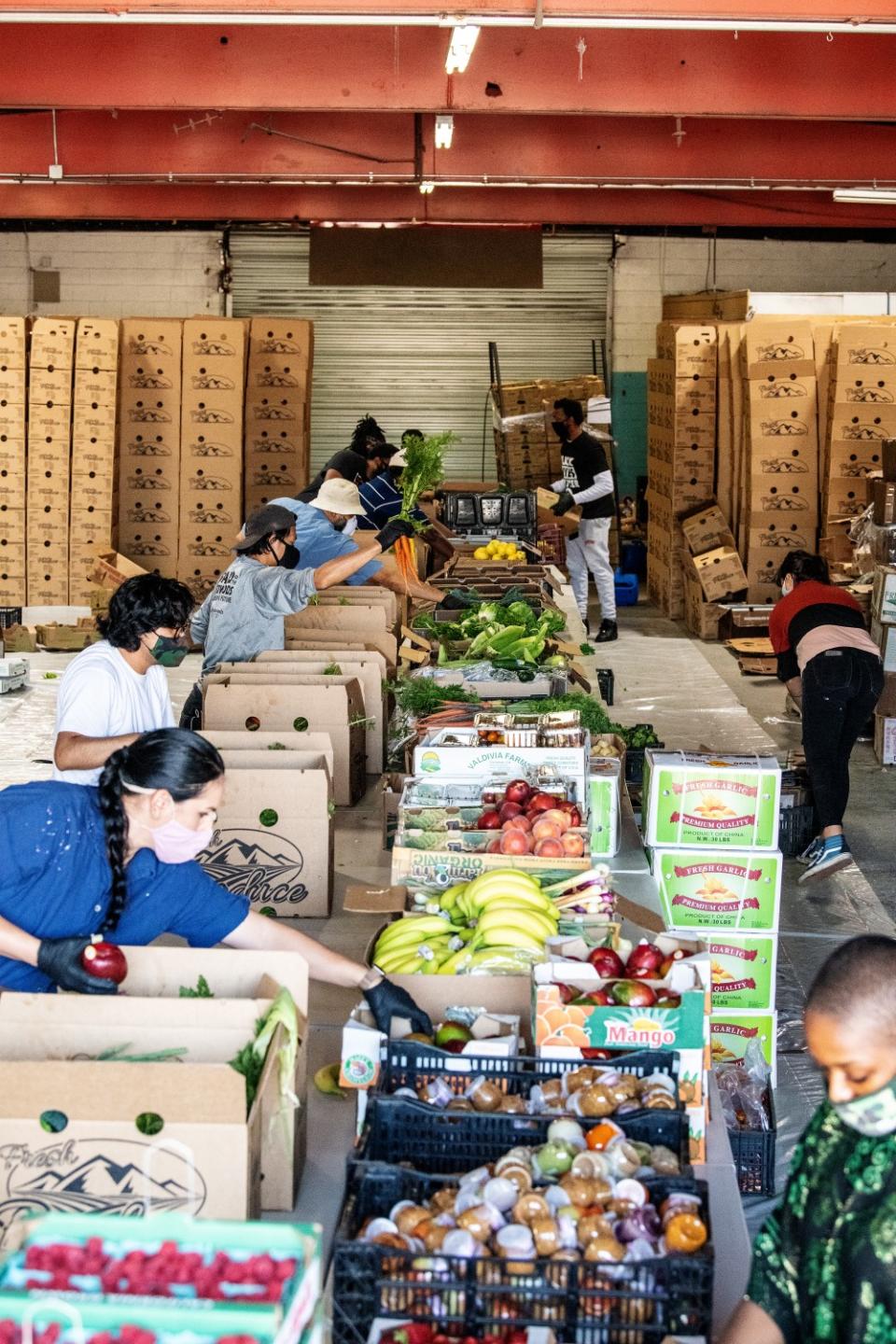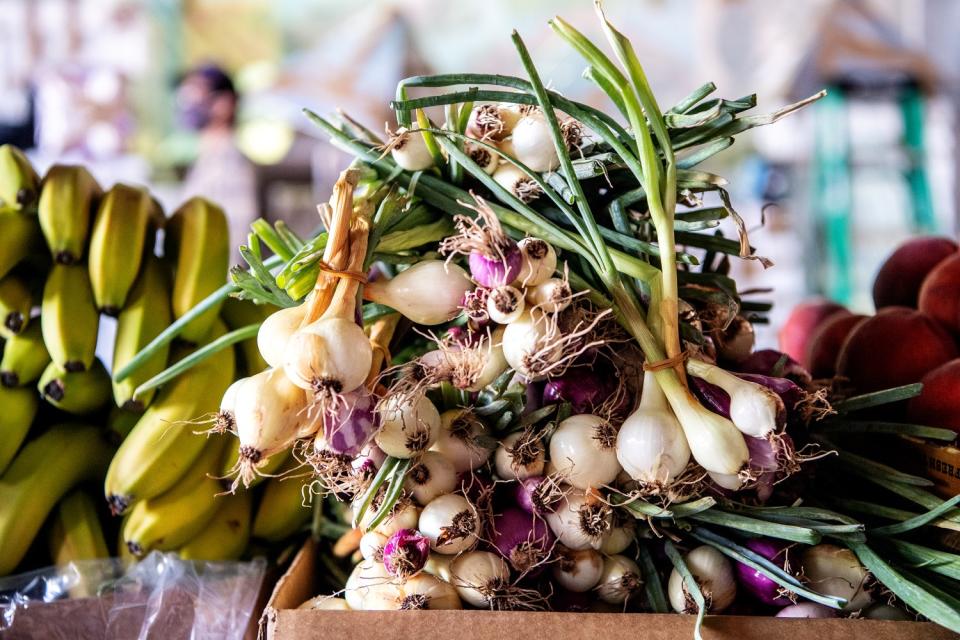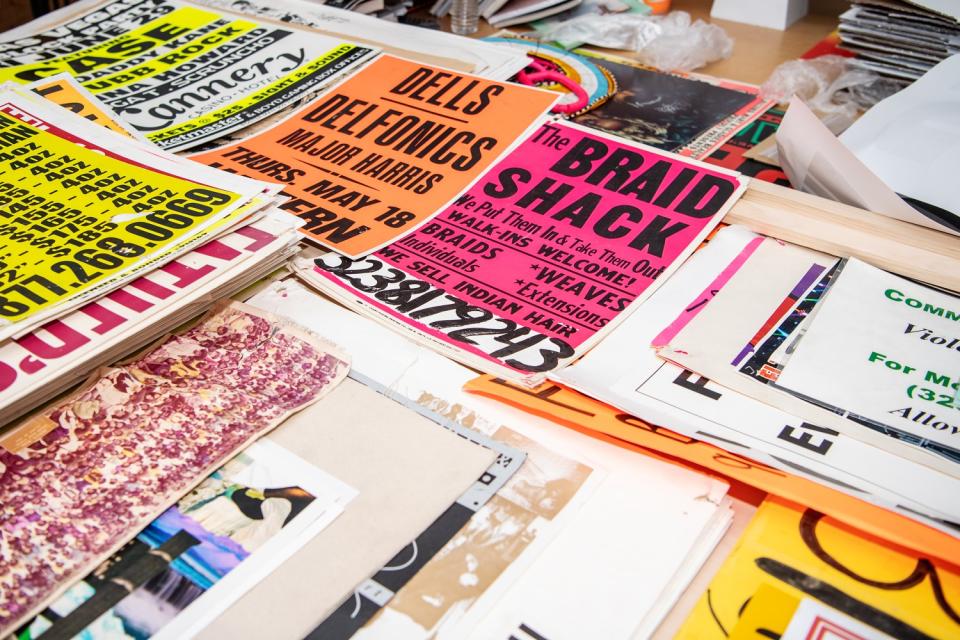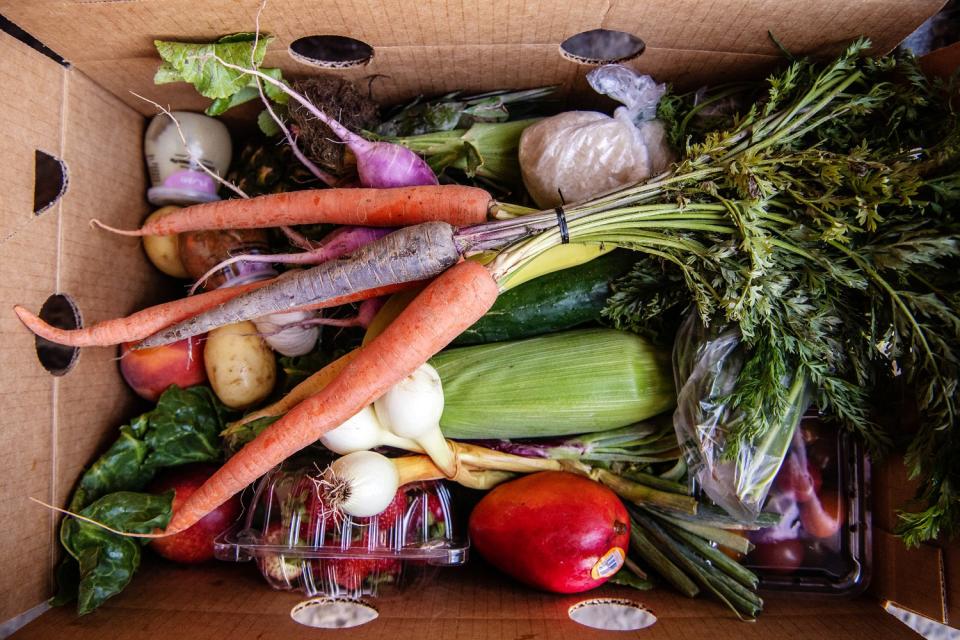Artist Lauren Halsey's latest project: bringing beautiful produce to underserved neighborhoods
On a recent Thursday morning, artist Lauren Halsey, dressed comfortably in jeans, sneakers and a straw hat, gathered a small group of volunteers inside a warehouse in South Los Angeles to help unload two refrigerated box trucks filled with some of the most beautiful produce in Southern California.
The bounty included pallets of bright gold-yellow beets, leafy bouquets of rainbow Swiss chard, crates overflowing with strawberries and raspberries, oversize bags stuffed with fragrant skeins of fresh rosemary, chives and basil and a few boxes of super-fragrant, late-season Ojai citrus.
“I never fathomed I would be putting in orders from farms for produce, or obsessing over things like refrigeration,” said Halsey, who has spent the last nine weeks immersed in the complicated logistics of produce distribution.
Halsey has no previous experience with the machinations of food supply chains; she is better known to the world as one of Los Angeles’ most accomplished young artists, a chronicler of South L.A. life whose ambitious, large-scale projects document and remix the city's ephemeral streetscapes and commercial artifacts. Her most recent exhibition used boldly rendered art sculptures, including large cubes and prisms, to vividly evoke the colors and iconography of a South L.A. city block. The installation paid tribute to quotidian Black and brown life and commerce while also critiquing the destabilizing forces of gentrification.

Halsey is a natural collaborator with a penchant for pursuing big, complicated projects — especially those that involve building community spaces; her best-known work is probably "The Crenshaw District Hieroglyph Project,” a series of sculptures, monuments and art installations that will eventually double as a community space for concerts, art shows and other events. The work-in-progress, showcased at the Hammer Museum's "Made in L.A. 2018” exhibition, is being built in the parking lot of Halsey's art studio and will be housed in a permanent structure at an undetermined location in South L.A. some time in 2021.
This summer, Halsey has been engineering her most wide-reaching project yet: Summaeverythang, a community initiative to bring organic fruits and vegetables to some of L.A.'s most underserved neighborhoods.
Summaeverythang has donated an average of 600 organic produce boxes per week to South L.A. residents since Halsey started the initiative nine weeks ago, after her plans to turn an empty warehouse into a local community center were put on hold because of the COVID-19 pandemic.
(“Three or four years ago, I became super-committed to the idea of having a community center in my neighborhood that would support all sorts of intelligence for free at a very high level,” she said.)

Halsey briefly holed up in her studio for an “art vacation” but found she couldn’t disconnect from the COVID- era realities of increased unemployment and food insecurity.
“Two or three days into it, it felt irresponsible to dream up these beautiful images and representations of South Central as an Afrofuturist paradise. It made more sense for me to use that energy to do something tangible and immediate,” she said.
A record number of families in L.A. County have turned to food banks and food pantries since March, a clear marker of the growing food insecurity triggered by growing unemployment, which has hit communities of color particularly hard. The number of people applying to CalFresh, the state’s nutrition assistance program, has skyrocketed by a reported 179%.
“I landed on produce distribution, because food is a necessary nourishment that we all need to live and survive. There’s already a lack of resources here, and compounded by coronavirus, food was the gesture that made the most sense,” she said.
The Summaeverythang project costs about $16,000 a week to keep going, a figure that includes produce, truck rentals and a small crew of paid volunteers. Halsey funds the initiative through personal savings and donations of all sizes on the Summaeverythang website.

“It’s very important that we get the best of the best,” said Halsey, who notes that organic produce is still treated like a niche luxury item at some South L.A. grocery stores.
Halsey enlisted the aid of Korina Matyas, a childhood friend who is also an environmental law and policy advocate. Matyas helped get the project off the ground by connecting Halsey to local farmers.
Summaeverythang tries to work with small farms that need relief, she said.
“I know which farm this lettuce came from,” Matyas said, gesturing to boxes of fresh lettuce waiting to be packed.
“I know that they’re struggling to pay their workers. We can take a large volume of that lettuce that would otherwise go to waste,” she said.
Halsey recently tapped into the produce-buying power of the Jon & Vinny’s restaurant group. Chef and restaurateur Vinny Dotolo is a longtime collector of Halsey’s art, and he introduced Halsey to his personal produce hunter, Samantha Rogers, who helps Halsey place orders for many of the fruits and vegetables that eventually end up in Summaeverythang’s boxes.
Halsey has been buying from more than a dozen Southern California farms, including various produce from Oxnard's Tamai Family Farms, Schaner Farms in San Diego County (supplier of all the eggs), avocado and citrus from Mud Creek Farms and lettuce from Coleman Family Farms in Santa Barbara County.

The produce ends up at Halsey's warehouse by Thursdays, otherwise known as produce-box assembly day.
On Friday mornings, Halsey and a small crew of volunteers shuttle the boxes to various community centers, churches and other designated spots in Watts and South L.A. Halsey, who moves with the surefooted grace of a former high school basketball star, loads the produce boxes into handcarts and people’s car trunks.
Eventually, she will go back to working on her sculptural installations. For now, she’s committed to keeping the produce box donation program going for at least 40 weeks.
“I think a really beautiful gesture will be figuring out how to sustain this for a lifetime,” she said.
To that end, Halsey plans to build a community garden in South L.A. next summer called "The Funk Garden." It will have sculptures, she said, and it will eventually generate enough fresh produce to fill 100 boxes every week.
Halsey wants to help other fledgling community gardens too.
"All these programs have to do with community sustainability and helping to advance the lives of folks here, and our nourishment," she said.
“We’re going to donate a ton of seedlings and equipment to get things going. And then I have a few more tricks up my sleeve after that.”


